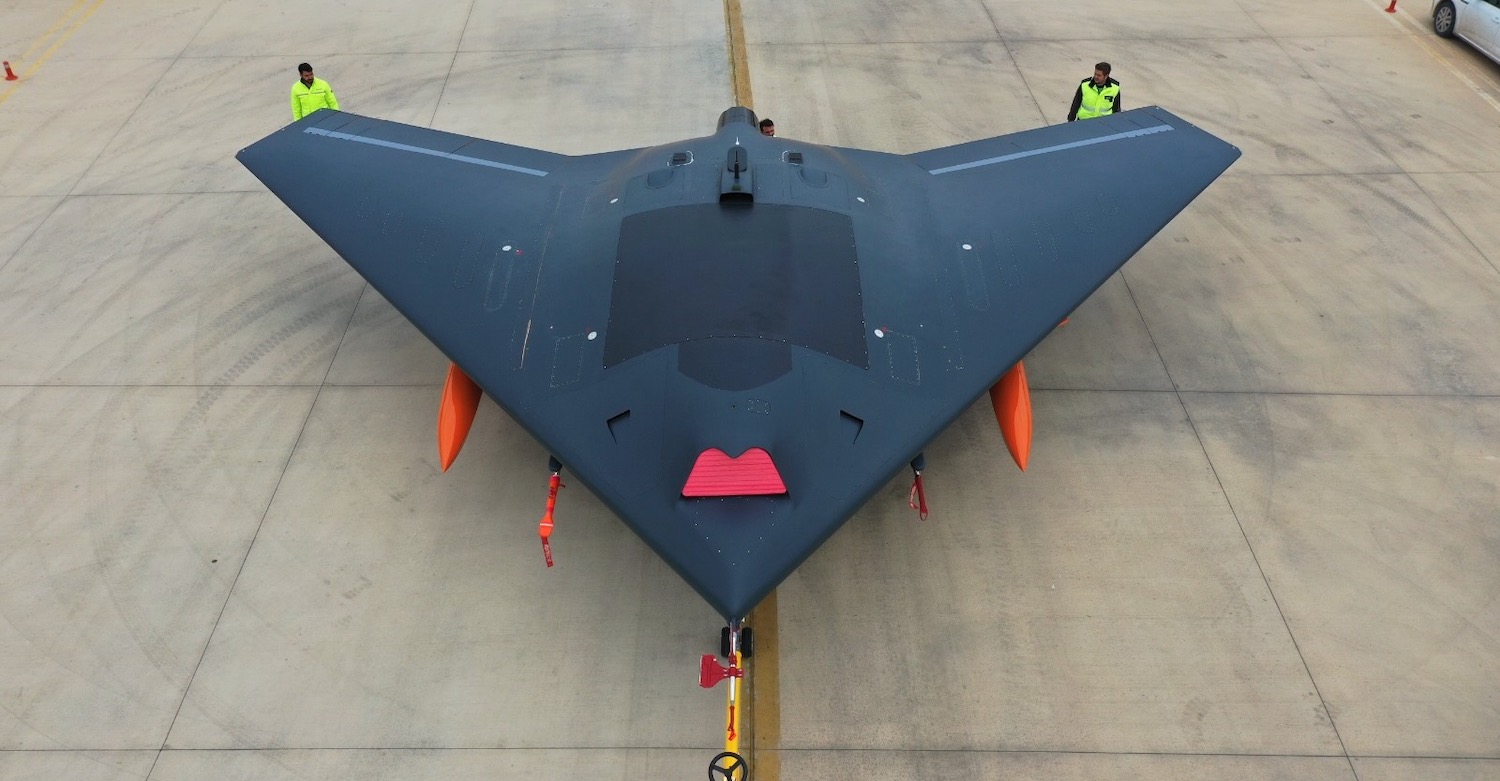Click Here to View This Page on Production Frontend
Click Here to Export Node Content
Click Here to View Printer-Friendly Version (Raw Backend)
Note: front-end display has links to styled print versions.
Content Node ID: 413561
Turkey’s Victory Day (March 18), which commemorates the battle of Çanakkale (Gallipoli), coincided this year with the 100th anniversary of the founding of modern Turkey by Kemal Atatürk. Given the date's significance, Turkish Aerospace (TAI) chose it to unveil its Milli Muharip Uçak (MMU, National Combat Aircraft) fifth-generation fighter, formerly known as the TF-X. The aircraft taxied under its own power on March 16 before a low-key rollout ceremony two days later.
The MMU prototype closely resembles the mock-up that has been seen at international air shows, albeit with a more “humped” profile, giving a better all-around view for the pilot but making TAI’s supercruise ambitions more challenging. The aircraft bears some resemblance to the F-22/F-35 and is intended to incorporate low-observable (LO) design features, including the use of internal weapons bays, leading-edge alignment, and presumably radar-absorbent materials and structures. TAI claims the aircraft has AESA radar with “more than twice as many [transmit and receive modules]” as the F-22’s AN/APG-77, and has infrared search and track and electro-optic arrays above and below the nose in LO installations.
The MMU is one of three Block 0 development aircraft, each of which will be powered by two General Electric F110 engines, that form Phase One of the program, with the final aircraft being completed in 2026. TAI expects a first flight is expected by the end of this year, though it was once planned for 2026. Phase Two will begin in late 2028 and will include the delivery of 10 Block One aircraft to the Turkish Air Force between 2030 and 2033. Phase Three will begin in 2034 with the delivery of follow-on Blocks.
The fifth-generation MMU was originally intended to be the less-capable element in a high/low mix of fighter aircraft types, augmenting the high-end F-35. With Turkey’s ejection from the F-35 program, the MMU has assumed new importance, at least initially forming the high-end element in the future force alongside upgraded F-16s. Thereafter, the development of the MMU may eventually fill the high-end requirement, augmented by the first-generation MMU.
TAI had earlier planned to achieve a number of other milestones on March 18, including the first flights of the Hürjet advanced trainer and T929 Atak-2 heavy attack helicopter. The Hürjet taxied under its own power for the first time on that day, but the Atak-2 was not presented.
However, TAI did reveal its Anka-3 MIUS (national unmanned combat air vehicle system) prototype, which is reportedly designed to work in conjunction with the manned MMU in some missions and roles, operating as an adjunct or “loyal wingman.” It is unclear whether the Anka-3 UCAV—which is similar in configuration to Boeing's X-45C, Dassault's Neuron, and the BAE Systems Taranis—is intended to augment the Bayraktar Kızılelma UCAV that is already in flight-test, or whether the two aircraft are competitors to fulfill Turkey’s Project MIUS requirement for a low-observable, supersonic, carrier-capable UCAV developed for the Turkish Air Force and Turkish Navy.
